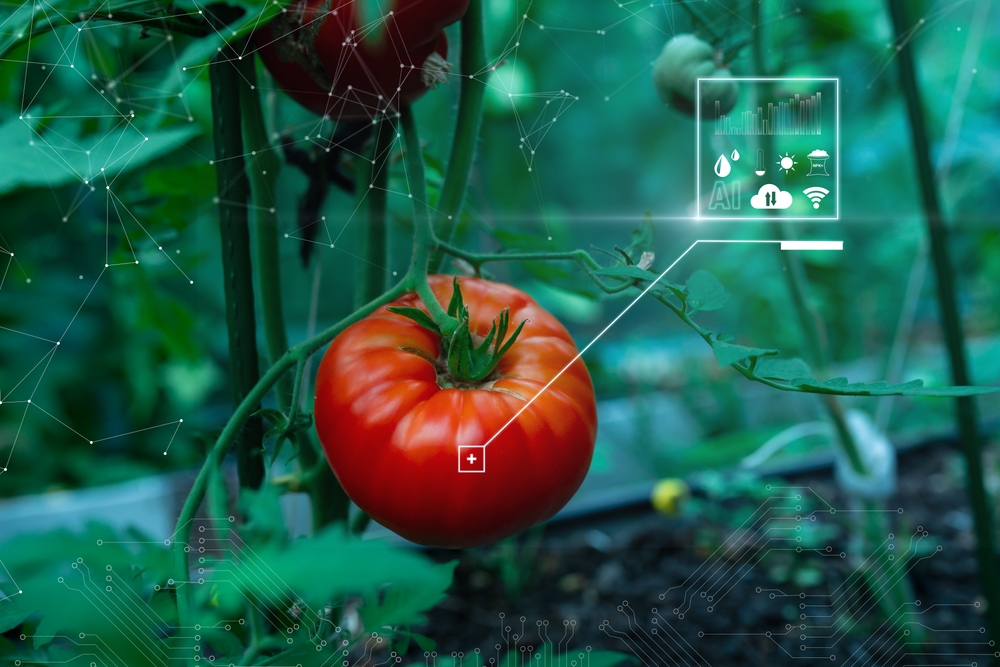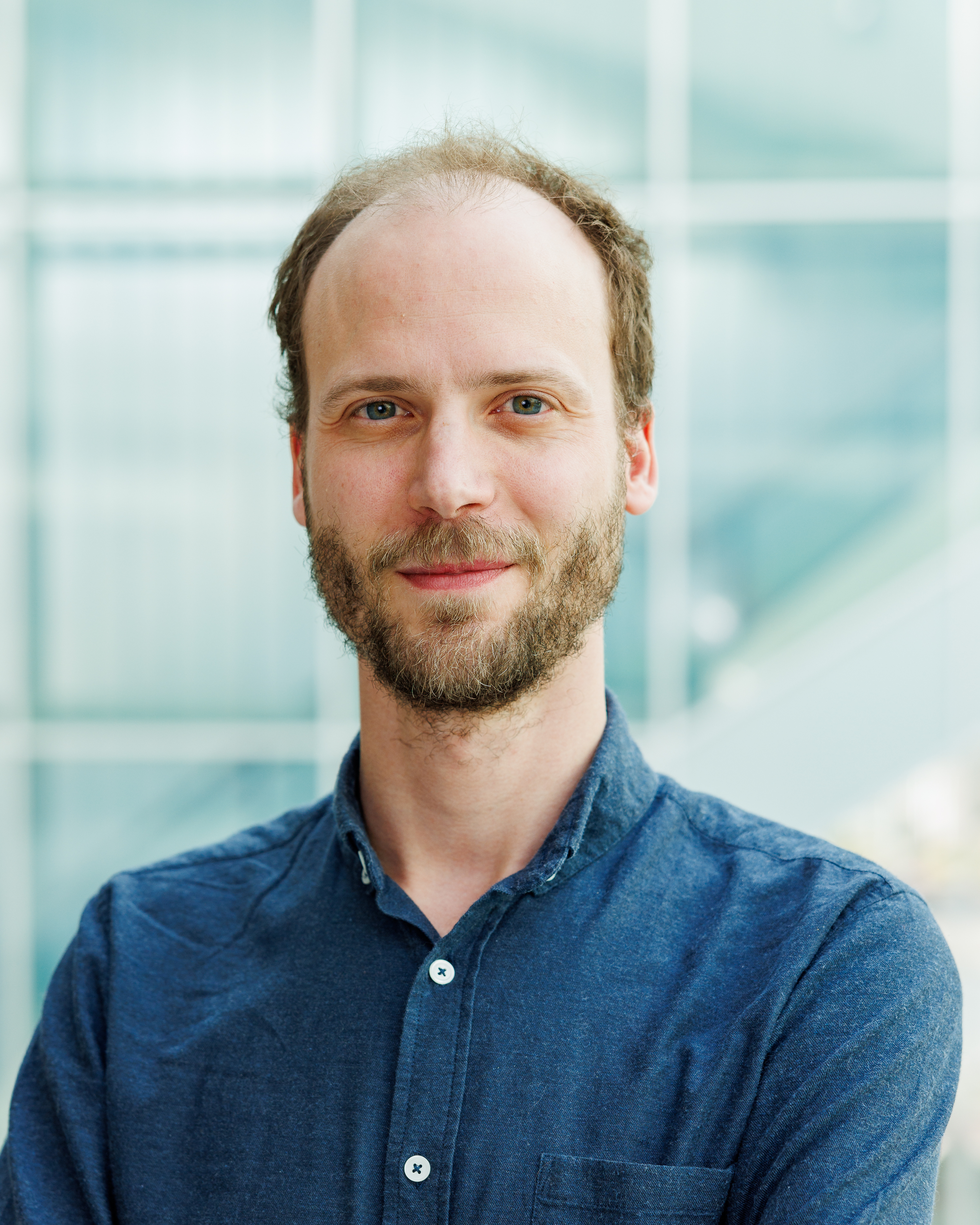Testing ground for innovation: sensor technology in greenhouse horticulture
20 March 2025
The research 'Crop Growth Well Measured' focused on contactless measurement of crops using sensors and light technology. The research yielded innovations that can further make greenhouse farming more sustainable.

Dutch greenhouse horticulture is a global leader in making crop production more sustainable. Yet growers continue to look for innovations to improve their practices. In the Gewasgroei Goed Gemeten project (GeGoGe, Crop Growth Well Measured) the Smart Sensor Systems and Photonics research groups at The Hague University of Applied Sciences spent two years investigating new technologies for agricultural production. The outcome? A promising testing ground with countless possibilities.
Greenhouse horticulture required research into the use of sensors and data analysis to better manage crop growth and yield. Together with Inholland University of Applied Sciences, Lentiz MBO, and various suppliers and growers from the Dutch Westland region, the two research groups of the Centre of Expertise Digital Operations & Finance took on this challenge.
Wide range of disciplines
The project received a RAAK SME grant and brought together a wide range of disciplines: from seed suppliers and growers to sensor specialists and data analysts. "Together we have achieved wonderful results", says Sam Aerts, associate professor in Smart Sensor Systems. "Follow-up research is now needed to be able to actually use these methods in crop production".
Manual measurements versus new technologies
Currently, growers measure the stem thickness of plants manually with a digital calliper and physically attach sap flow meters to the plants. This poses risks such as crop damage and disruption to the growth. “Our focus was on researching alternative measurement techniques and developing sensors that enable growers to measure in a contactless fashion”, says Aerts. “Consider, for example, lighting technologies, such as depth cameras and lasers, or technologies based on electromagnetic fields”. Measuring plant health and status is essential for growers to create optimal growing conditions and maximise yields

Collaboration between secondary vocational (mbo) and higher professional education (hbo)
Within the project, the coordination between secondary vocational and higher professional education students was excellent. Lentiz's secondary vocational education students cared for the crops, monitored the climate, and performed manual crop registrations in the circular greenhouse. Meanwhile, researchers and students from Inholland compared manual and sensor measurements to create a machine learning model that can predict sap flow. Aerts: “Our THUAS research groups focused primarily on the development of contactless sensors to measure stem thickness, head thickness and Leaf Area Index (LAI). Many secondary vocational education students work in greenhouse horticulture and were introduced to sensor technology and data collection through this project. Even now that the project has been completed, we continue working together. In professional practice, secondary vocational and higher professional education graduates also work together”.
From tomato plants to virtual reality
The tomato plant was the focus of the study. For tomato cultivation, the stem thickness at the growing point, approximately 30 cm below the top, is crucial. A head thickness gauge was developed for this purpose: a sensor that measures stem thickness without damaging or even touching the crop. An optical calliper, based on a laser and an inexpensive Pi camera module, provided reliable and accurate measurements under good conditions and proved to be affordable. In addition, the Leaf Area Index (LAI), or leaf surface area index, was examined. Using a 3D camera, RGB images were combined with distance measurements. The researchers developed algorithms for leaf recognition in tomatoes, leading to an interesting alternative to current manual measurements. One particular application is Gaussian Platting: an advanced technique that converts moving images into a 3D model. "Growers can thus walk through their greenhouse in a virtual reality environment and inspect crops remotely", Aerts explains. "A great example of applied research!"
Optical technologies for stem measurements
The Photonics research group found an innovative solution for measuring stem thickness during growth. A beam of light is shone onto the stem and a sensor measures the shadow of this beam to determine its thickness. The first prototype appears to deliver measurements that are just as accurate as the commercial sensors used in the project. Further work is now underway to make the sensor commercially interesting.
The way forward
The two-year project yielded not only promising technologies but also a strengthening of the research and practice network. During the project, there were intensive consultations with growers to refine the research directions. Their practical experiences and insights played an important role. As did the input from the many practice partners involved in this project. The next step is further development and practical research. "There are plenty of opportunities for students from the Next Level Engineering master's degree programme, for example, to continue working on concrete solutions", adds Aerts. “In addition, more students are now taking part in work placements in greenhouse horticulture, such as at Tomatoworld. Lecturers incorporate the research results into their classes”.
Great potential
The application of sensor technology in greenhouse horticulture has great potential. “We are close to various technologies that can be widely applied”, concludes Aerts. “The future lies in collecting data, making analyses, looking for correlations and developing predictive models. Sensor technology can be widely deployed in the sector. Ultimately, we want to develop a sensor that both takes accurate measurements and is also easy to use".
Leading the way in sustainability
Further automation also contributes to cleaner and more efficient cultivation. Less human presence in the greenhouses means less risk of disease, further strengthening the sustainability of the sector. "This is just the beginning", Aerts concludes. "Today's innovations are tomorrow's standard".
About the Centre of Expertise Digital Operations
The Smart Sensor Systems and Photonics research groups are part of the Centre of Expertise Digital Operations & Finance. We conduct practice-oriented research and use digital technology to create a virtuous economy. For us, that means an economy with a small ecological footprint. An economy ensuring a future that is inclusive, sustainable and resilient.
The research ties in with one of the overarching themes of the Centre of Expertise Digital Operations & Finance: Data Driven Sustainable. This theme focuses on the opportunities of data and technology. The focus is on collecting, analysing and applying data to promote sustainability and support businesses in data-driven decision-making.